Seeing beyond the veil.
My favorite way to recharge is to immerse myself in beauty. Over Christmas I took a break and sought out some museum old favorites that I knew wouldn’t disappoint. I’ll share some of my favorite points of contemplation here from a few of those gallery visits.
The first image that I saw in a new way at the National Gallery of Art in Washington, DC is “The Nativity” by Petrus Christus, that hangs in Netherlandish section. It elegantly portrays elements that evoke a Mass setting, but a detail in particular hit a nerve, especially given how bleak things seem in the Church and world right now.
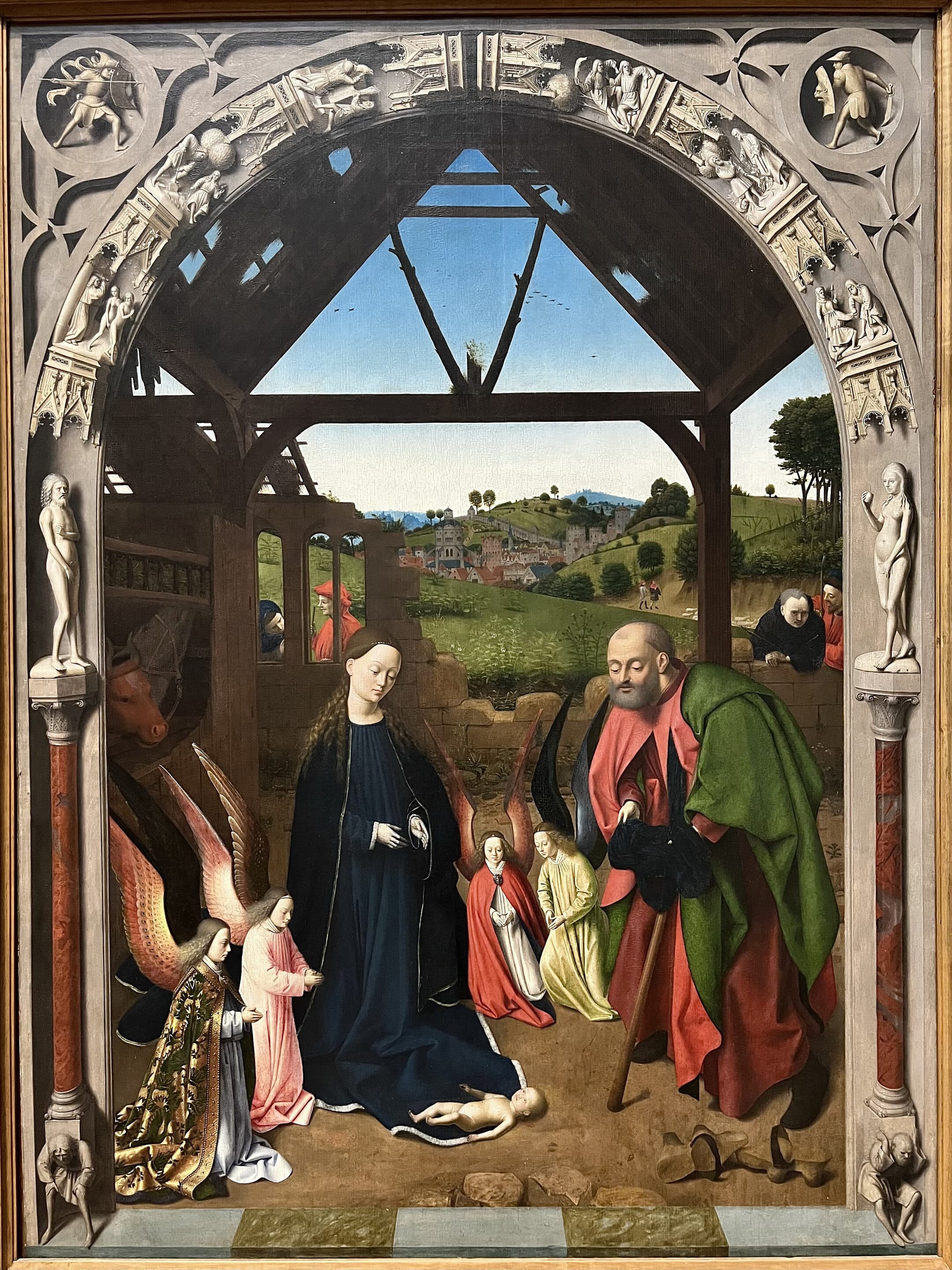
My eye went immediately to the gloriously painted angel’s cloak in the lower left that certainly checks the ‘otherworldly’ box. Every color and shimmer, on what looks like sumptuous Solemn High Mass vestments, is meticulously rendered to truly prompt the viewer to think “eye has not seen/ear has not heard…” [1 Cor 2:9] It’s the mesmerizing rich green color and golden detail that makes you lean in to examine how those strokes of mere paint are able to glow so much. While moving in to examine it more closely, I noticed a little figure in anguish, slightly in front and to the left of that angel, painted in grisaille, (essentially monochromatic grey tones) holding up a heavy pillar on his back. This plain, grey figure is almost unnoticeable since the angel’s brightly colored garment is what draws and keeps your eye’s attention.
If you follow the pillar upward though, you can see a figure of Adam standing on the column and then above that, the narrative of Adam and Eve being expelled from the garden. (See those details side by side below.)
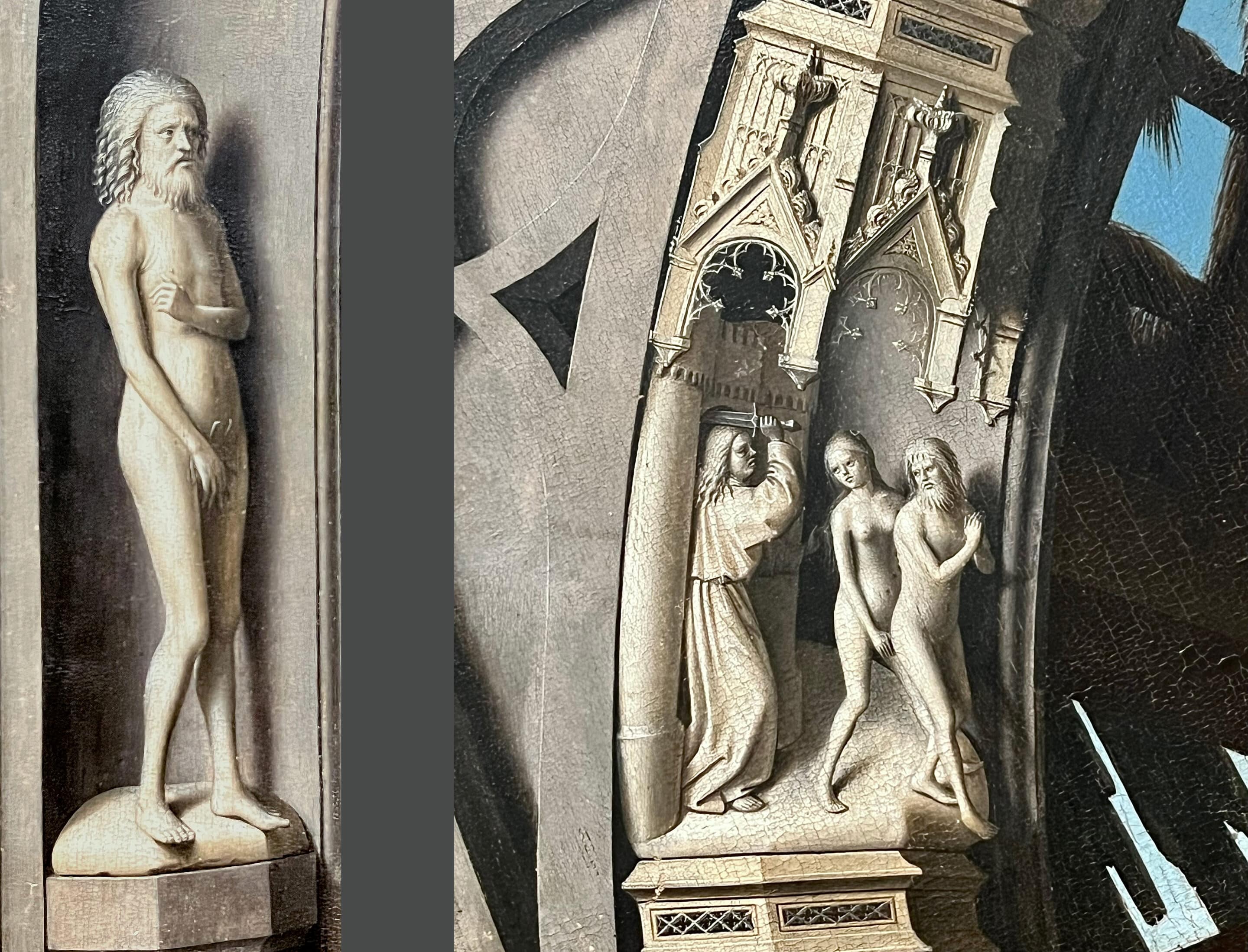
Indeed, the domino effect from that original sin has been a heavy burden on every soul since. The monochromatically painted frame of figures, that works as a backdrop of sorts, tells the story of our sad fall necessitating the need for a redeemer. Color, or lack thereof, is used as a tool to express themes of earthly drudgery without God’s grace, and vivid, otherworldly color seems to signify the luminosity of a world just beyond the veil, but still present to us in the Mass. Then I just stood in awe of how beautifully the following truth was presented:
If we only have eyes to see, we’d be able to see the angels adoring and attending to the eternal sacrifice of the Mass present at every moment for us. The heavenly realm is only ever just an arm’s length away, beyond the thinly veiled dull frame of this world. But when our eyes, more specifically our hearts, are more attuned to the darkness and drudgery of this passing world marred by generations of sin, we miss the glory of what is happening in eternity right now.
There is so much more to examine in this painting, and I certainly don’t want to dismiss the many other meaningful elements. For this prayer meditation, I just want to focus on this one point of the veil, so just take your time with each segment in the following reflection.
Take a step back to look at the whole image again and see how the monochromatic, staleness and violence of this world, depicted in the arch is compared to the dazzling array of life and color emanating from the central figure of Christ, the Infant Priest, come to redeem us by offering Himself as victim. Just sit with the contrast and let yourself be aware of it spiritually.
Look for areas in your interior life that you can attribute elements analogously, like greyness and worldly burden, or heavenly light and peace.
Then zoom in and look at the detail with the angels and burdened figure, placing yourself in the scene as the burdened grey figure.
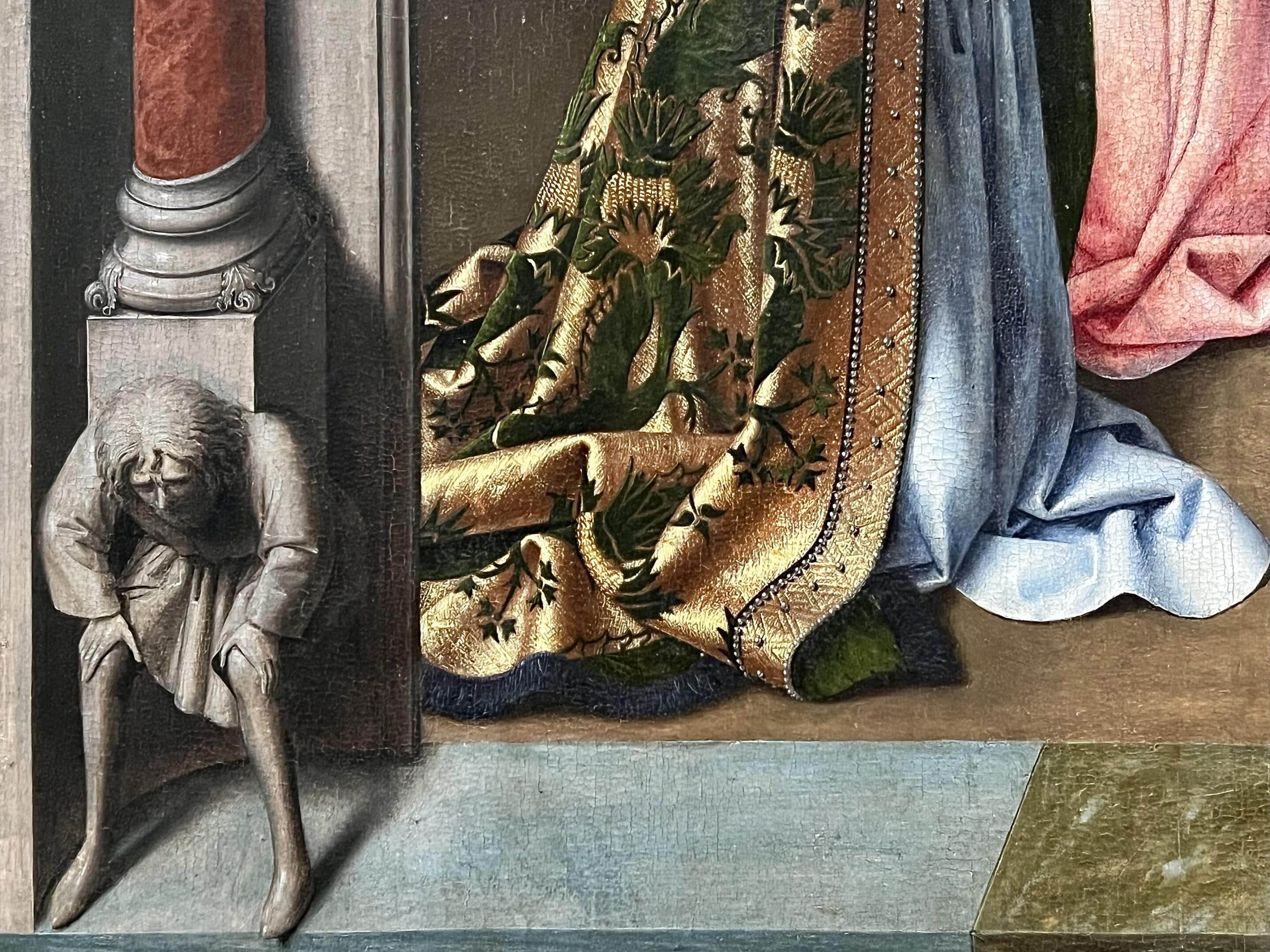
Let yourself feel the weight of your personal sin and the sin of mankind from the first sin of Adam. Imagine this also as the weight Christ felt in His agony in the garden. Sit with that weight. Then take notice of just how close you (as the grey figure) are to the veil, the mystery of heaven, and how much more vivid and real that world is in comparison to where we spend most of our energy focusing on, with the burdens and weight of the world.
This vivid kingdom is what is always ‘at hand’ for us. [Mk 1:5] How aware are we of this in our day-to-day endeavors? Is everything we do in reference to it? The common, piously invitational phrases we always hear, ‘take up your cross, put on His yoke, that it’s easy and light…’ can seem overbearing as with the little figure holding up the column if we miss the point that with God’s grace we can live spiritually in that vivid world beyond the veil. We literally taste this world at every Mass. What might be missing or preoccupying our inner vision that at times we cannot see and live in this redeemed reality more consistently? Take some time to write notes in your prayer journal of any insights for this part of the meditation before we move on.
It’s been a while since I visited The Met Cloisters in New York City, but if I can time it, I love going during Christmas for the period decorations that bring to life this unique medieval monastic setting. The whole place feels like I’m stepping back in time and walking into an old painting.
The sanctuary decorations, in particular, in the Langon Chapel made my heart smile. There was a sheave of wheat that was displayed with the most delightful, symmetrical perfection at the base of the altar, and it triggered a cascade of imagery in my mind of the many nativity paintings of this era with bundles of wheat depicted near a newborn Christ.
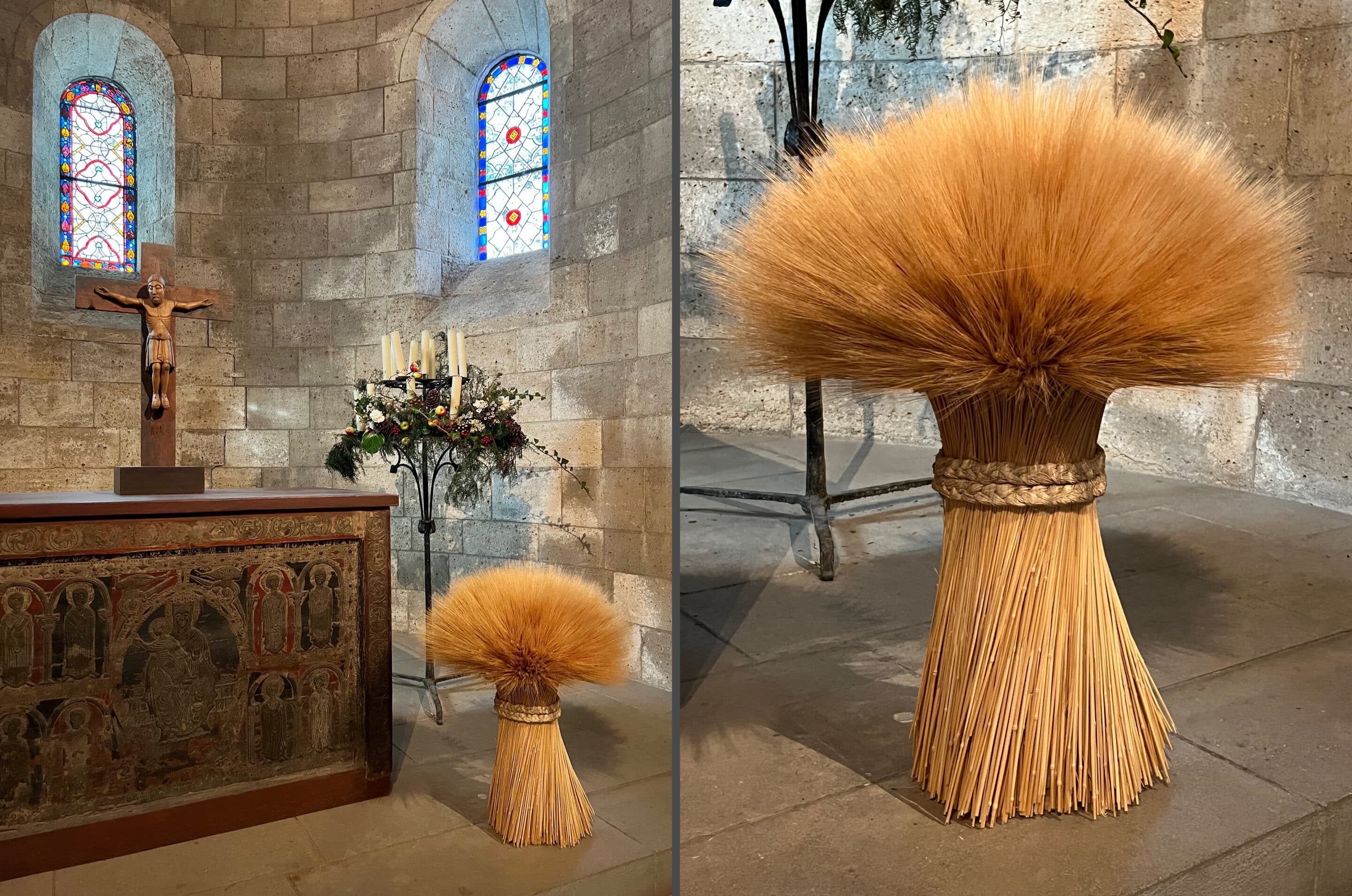
As it happens, right next to “The Nativity” painting in DC mentioned earlier, is “The Adoration of the Shepherds” by Adriaen Isenbrant featuring a lovely bundle of wheat in front of the Infant. (Pictured below.)
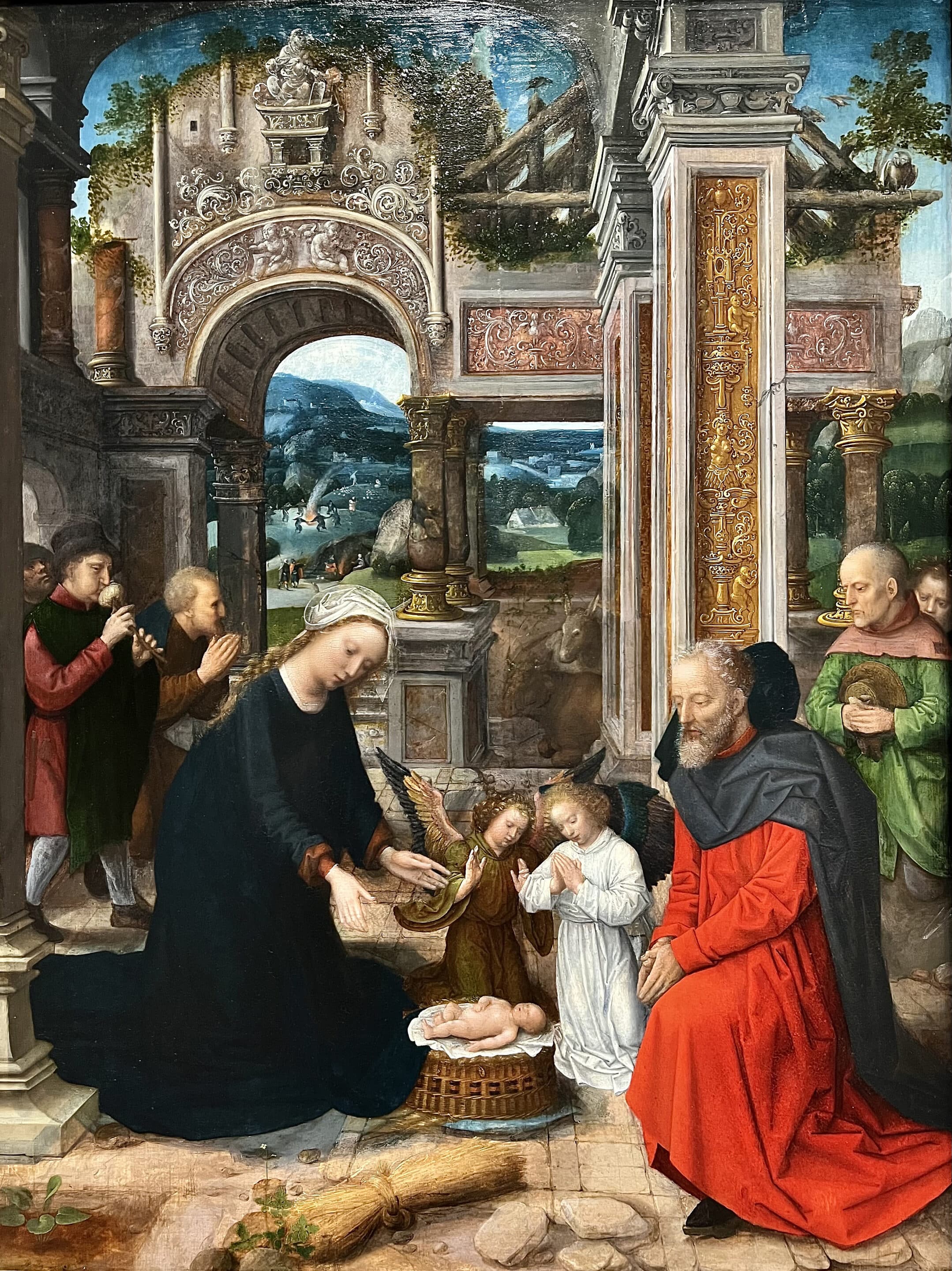
It is so poignant to see the inclusion of wheat in these contemplative nativity scenes because it reminds us of Christ’s ultimate reason for becoming Man. Like the grain of wheat, He is crushed to become our Eucharistic food, making us one with Him, so that through His death and resurrection we return to the Father. All this Christmas and Easter goodness is beautifully tied up within one image by just a simple placement of ears of wheat near the Christ Child.
This reminds me of the Croatian custom of growing Christmas Wheat. Wheat seeds are planted on St. Lucy’s Day, Dec 13, so that tender green sprouts are several inches tall by Christmas. The new wheat symbolizes the newborn infant Jesus that will become our Eucharistic bread. These little pots of wheat sprouts are typically placed near the figurine of Christ in a manger scene both in churches and in homes. (Below right is my little pot of Christmas Wheat.)
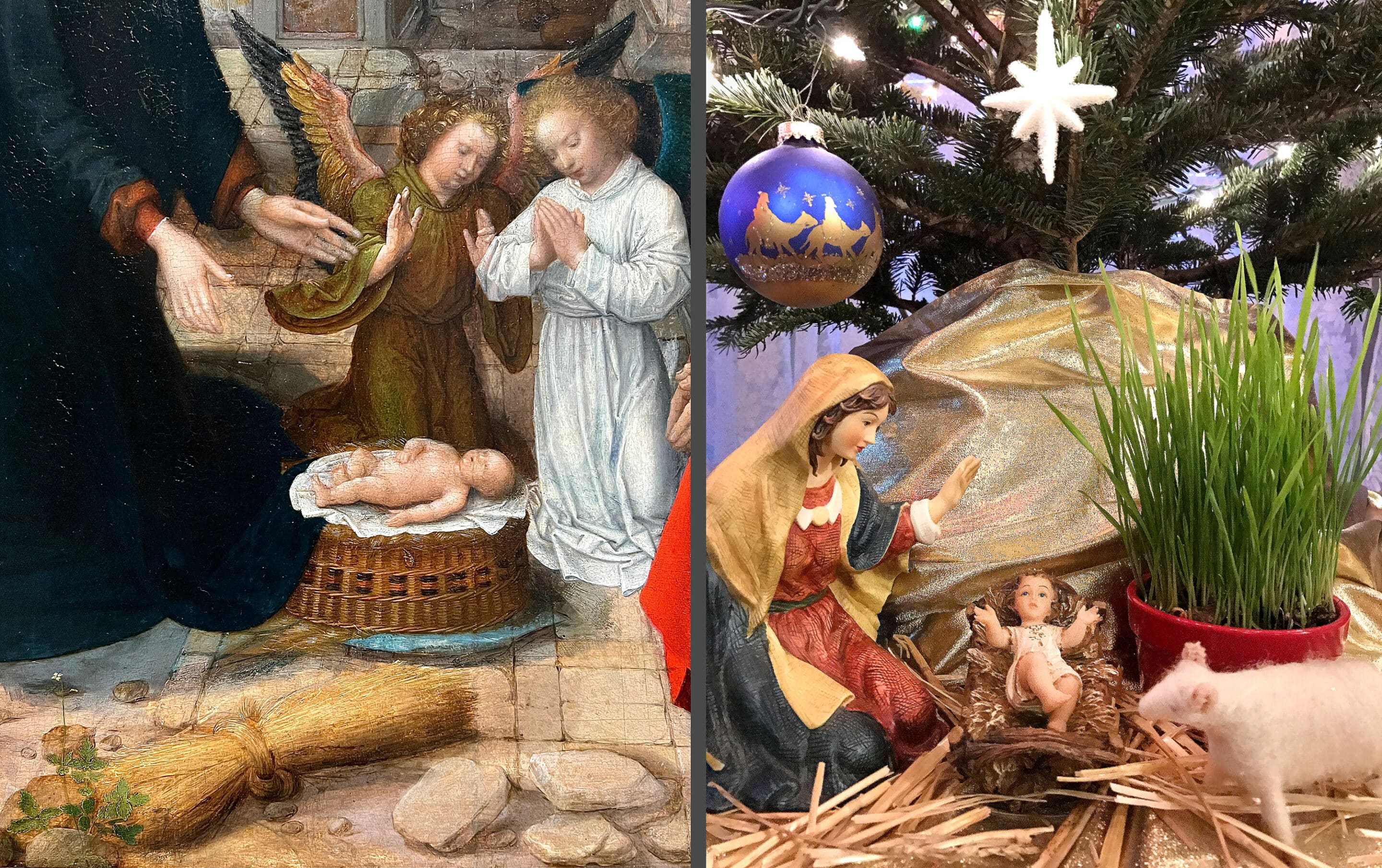
I find the visual of the tender soft green shoots of wheat evoke an added sense of vulnerability, matching the imagery of the dependent infant Savior, who will eventually be led like a lamb to the slaughter. This vulnerability is also manifested through His dependency on our ‘Yes’, by waiting for us to invite Him in, and to literally digest Him, in order to let His grace permeate every aspect of our being.
The tender green shoots also remind us of how carefully we must nurture and guard that new life of Grace within us as well as how easily it can be damaged or destroyed. If you grow Christmas Wheat, you’ll find out that you can never let it dry out, and that it needs to be gently watered so as to not damage the tender seedlings as they grow. It’s a perfect, tangible prayer activity for Advent actually.
(I write about my discovery of the meaning and growing of Christmas Wheat on my Christmas Novena site, where I dive more deeply into the contemplative potential that can be gleaned from this simple tradition and imagery. It’s definitely worth a read to enhance this meditation when you get a chance.)
One of the beautiful things about our Faith is knowing that God’s fingerprints are all around us. If we choose to be attentive to how signs and symbols can speak to us about Him, we soon begin to see God revealing Himself everywhere, and this subsequently breeds a favorable environment that helps us to ‘pray always and without ceasing’. [1 Th 5:17]
Being able to pray this way feeds the desire for more intimacy with Him, that in turn facilitates receiving extra graces and consolations in a world that tries so hard to avoid Him. When God is habitually ignored or dismissed, it inevitably leaves a soul starving, willing to eat garbage and settling for counterfeits, increasing the sense of burden on our backs.
As we straddle how close the end of the Christmas/Epiphany season is with the time of pre-Lent, these images serve well to facilitate connecting Christ’s birth with His death. Whether as in the first image, where we see our need for salvation illustrated in the framing archway or how in the second image the Christ Child is foreshadowed as our Eucharistic Food in the wheat imagery, we are reminded of the sober cost of our salvation in the midst of Christmas joy. This will hopefully rekindle in us the sense of how much we are loved and wanted by the Father who did not spare offering His only Son for our redemption.
To conclude this meditation, let’s return to identifying those things that burden us and then those things that give use strength and nourishment, namely our Eternal Food that hails as the only hope we have for our weary souls, especially in these dark and confusing times.

Let’s revisit that first image and how heavy the burden of sin is. It’s easy to see the weight of sin around us and feel overwhelmed by the things we cannot control. But how easily are we able to pinpoint the burden of sinful habits we create and carry on our own backs? Things change in the world, and with ourselves, with one small step at a time. What might be some bad habits and/or vices we have, that we might employ, unintentionally perhaps, to cope with a hidden wound? Can we name just one vice or one wound in need of healing? Take this part slowly. Let’s hold it in our hands and examine it with Jesus and Mary helping us look at it from their perspectives. How does that ‘bad thing’ act as a distraction or obscure the redemptive reality of what is just beyond the veil that Christ is trying to heal and renew in us? Are we afraid to look beyond the veil? Do we feel hopelessly chained and pulled down by our burdens? Ask the Holy Spirit to help us see, with the vivid radiance that the angels do, a certain mystery or grace we need in this moment.
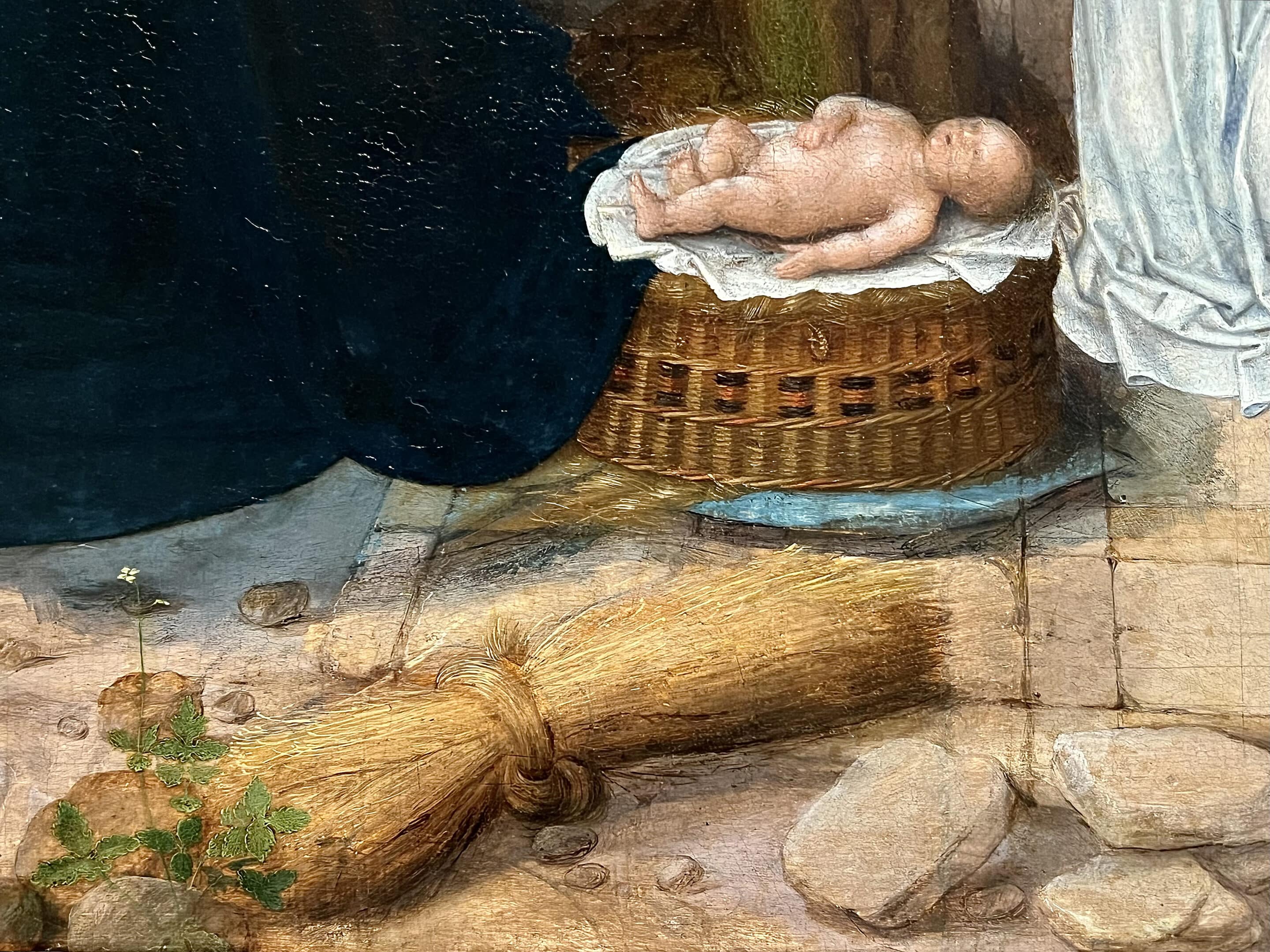
Let’s look at the images of Christ represented as humble wheat. Are we willing to make ourselves vulnerable with the infant Jesus, face and surrender our vices, and let our sins be buried so that new life might germinate? Is there one thing we sense we are holding on to with an exceptionally tight grip? Do we trust Jesus to let certain things die on the cross with Him so that new life might grow within us? Do we come with longing to receive Christ in the Eucharist, surrendering ourselves to Him?
Self-reflection:
What are your main takeaways from this reflection? What jumped out the most? Was any part of this meditation hard, or confronting, or met with resistance? Sit with that and dig deeper to uncover why that might be. Was a wound or a nerve touched? Did you experience any consolations or notice a fruit blossoming that you can give thanks for and nurture? Is there one thing you might consciously choose to see differently when looking at the Mass, images of wheat, or manger scene in the future? How aware are you of your guardian angel, who is always in adoration before God and at the same time right beside you, so eager to help you see what he sees beyond this world? Try to choose one thing you can resolve to see or do differently in the coming weeks, and track that, so that you can habitually begin to see just a little more of the glory beyond the veil that is always at hand.
————————-
Thank you for reading and I hope it was edifying! To get notified as I post more reflections on ways to pray with art, subscribe via my Contact page and let me know interests or topics you’d like to see covered. To support more of this work, have a look at my Shop to share my artwork that helps facilitate intimacy with Christ through beauty.
Images and meditation by Renata Grzan Wieczorek. Use only with permission. All images of museum artwork photographed by Renata Grzan Wieczorek with permission.

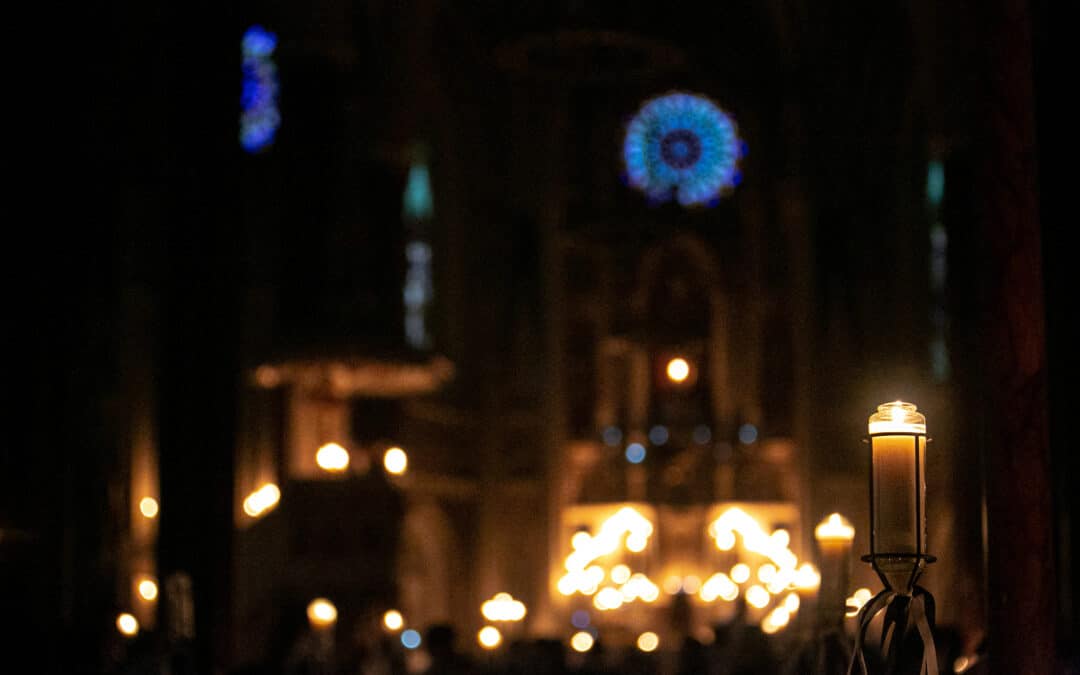
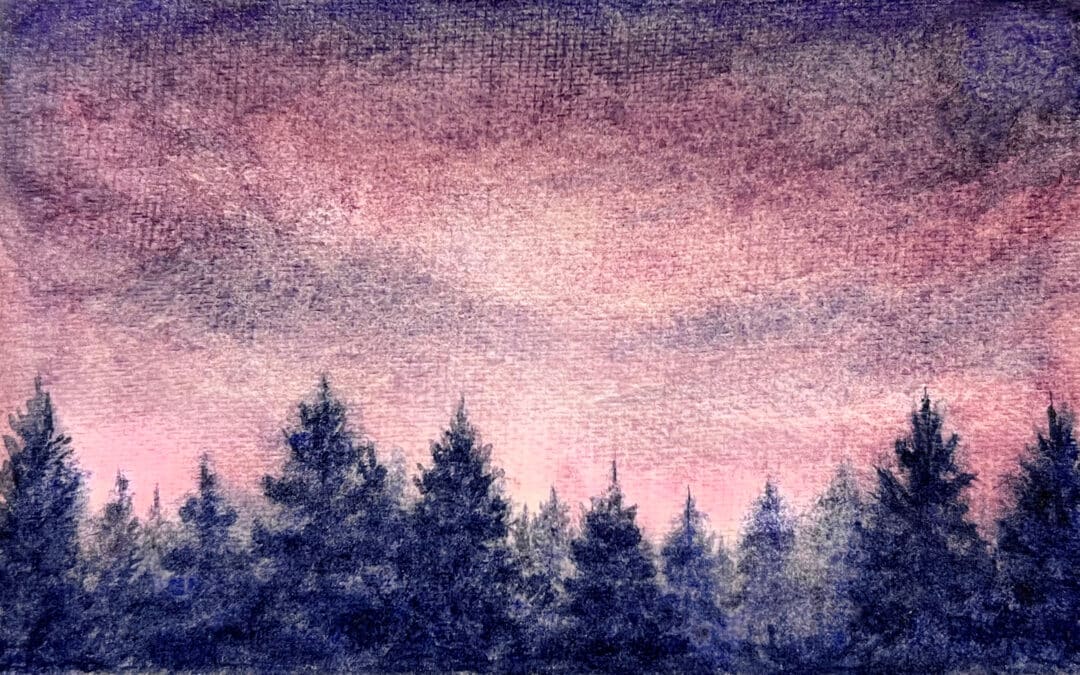
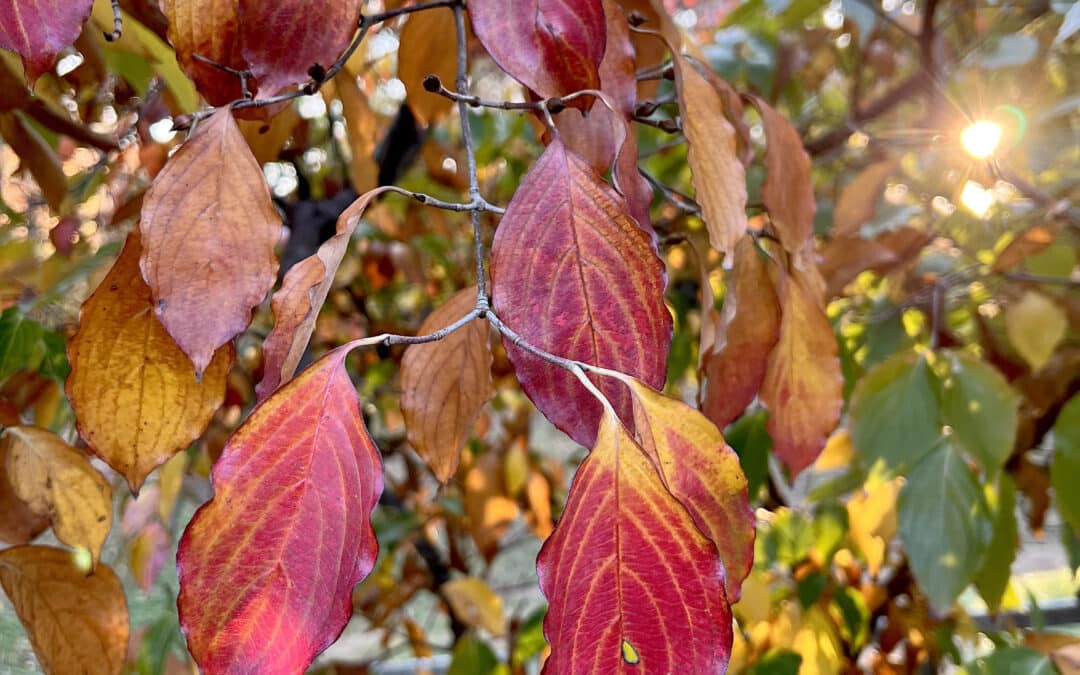
0 Comments